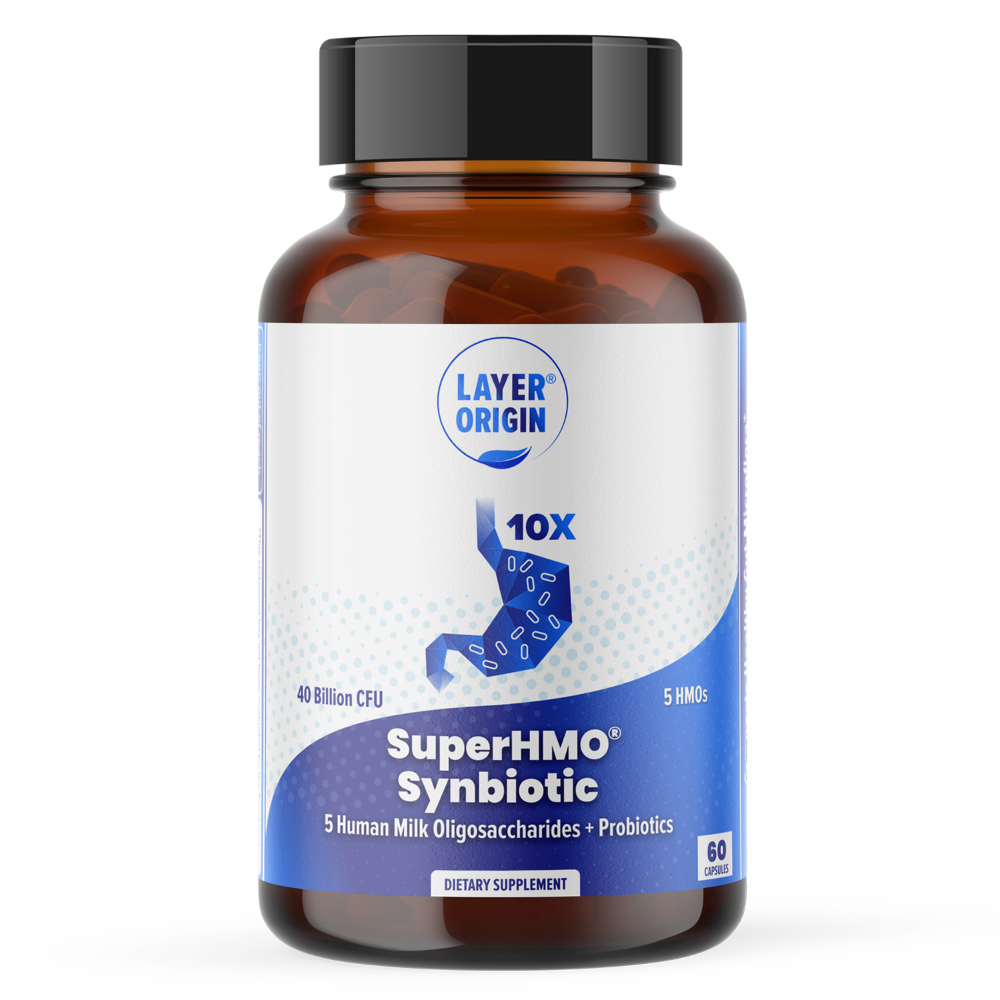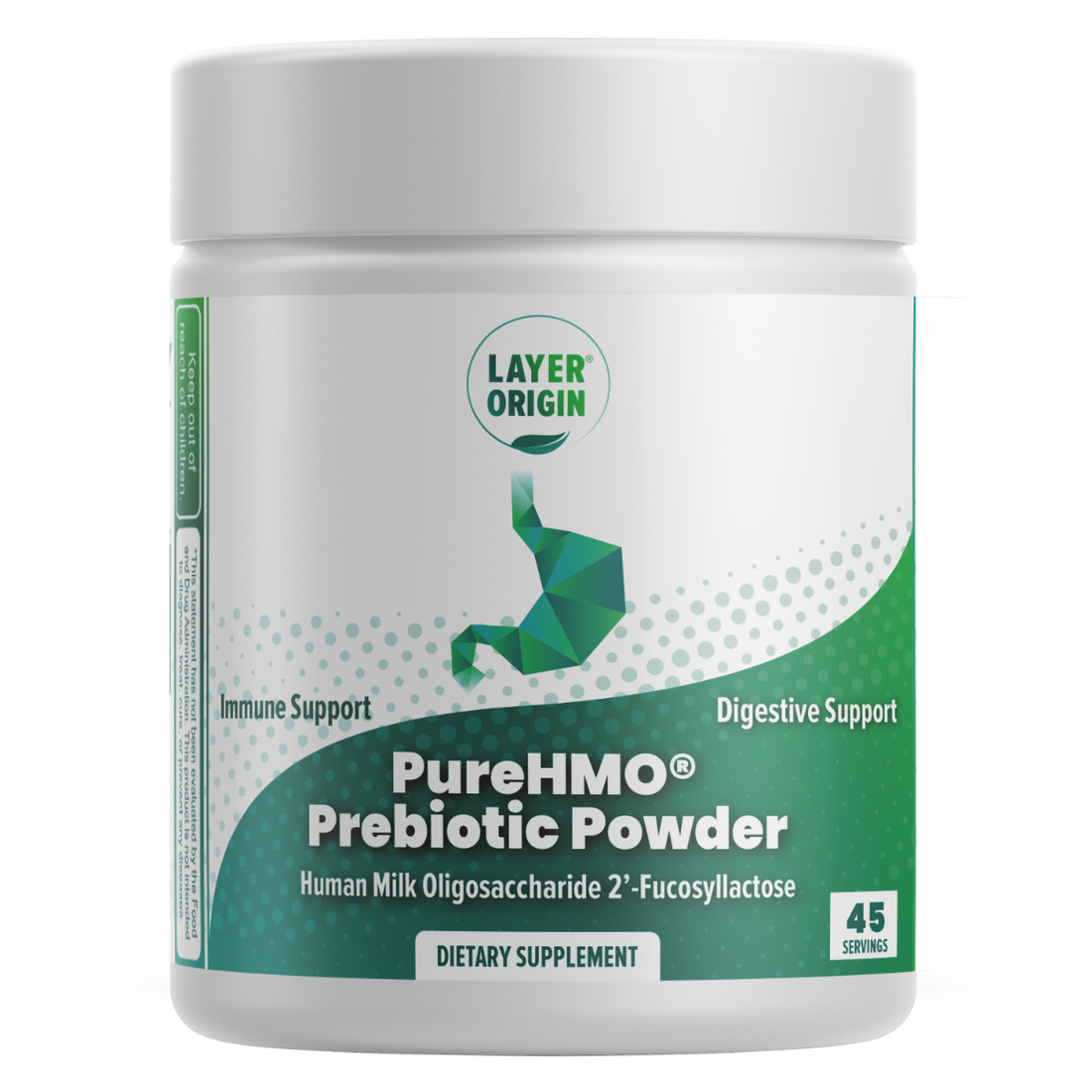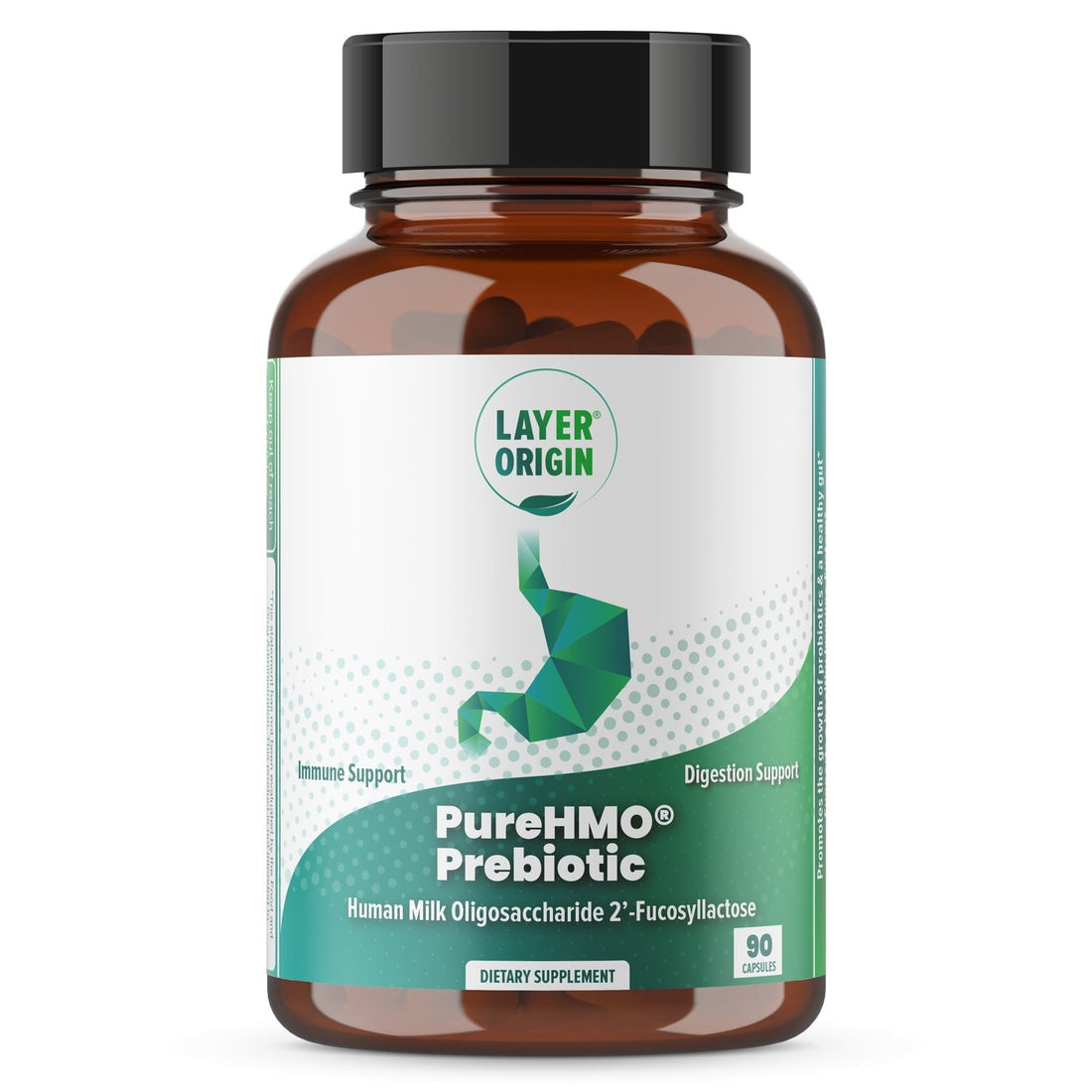Aging is a natural part of life, but who says we can't age gracefully? Our diet plays a crucial role in how our body and skin handle the effects of time. Scientific studies have shown that certain foods are packed with nutrients that support skin health, reduce wrinkles, and slow down the visible signs of aging. By including these anti-aging foods in your daily meals, you can nurture a vibrant, youthful appearance while supporting your overall health.
This guide explores the must-eat foods for an anti-aging diet, backed by research, to help you unlock your potential for natural radiance.
The Science Behind Aging
Aging is driven by complex biological processes, but two of the most significant contributors are oxidative stress and inflammation [i]. Over time, the skin’s production of collagen and elastin—proteins responsible for skin firmness and elasticity—naturally decreases. Combined with environmental factors like UV exposure and pollution, this decline leads to wrinkles, sagging, and dryness.
Free radicals, which are unstable molecules produced by these environmental stressors, damage skin cells and speed up the aging process. Antioxidants from food help neutralize free radicals, reducing damage and protecting the skin. Similarly, anti-inflammatory nutrients like omega-3 fatty acids help combat redness, irritation, and puffiness that can make skin look older [ii].
Moreover, hydration and proper nutrition play a direct role in maintaining the skin’s protective barrier, reducing dryness, and enhancing elasticity. This is why focusing on an anti-aging diet is one of the most effective ways to keep you looking youthful and healthy.
1. Foods Rich in Antioxidants
Antioxidants are essential for combating the damage caused by oxidative stress. They protect cells from harmful free radicals and promote natural repair processes.
- Examples: Blueberries, strawberries, blackberries, spinach, kale, and artichokes.
- Science Says: Research reviewed in Nutrients found that a diet rich in antioxidant foods reduces skin damage caused by UV exposure and slows down wrinkle formation [iii]. Another study highlighted that vitamin C, a potent antioxidant, enhances collagen production and helps fade dark spots [iv].
-
Key Benefit: Eating antioxidant-rich foods daily protects against premature wrinkles, sun damage, and dull skin.

Incorporating these into your meals is easy—top oatmeal with berries, toss spinach into a smoothie, or enjoy an antioxidant-rich salad with kale and artichokes.
2. Healthy Fats for Hydrated Skin
Healthy fats are the foundation of a plump, glowing complexion. Omega-3 fatty acids, found in foods like avocados and salmon, keep the skin hydrated and supple while reducing inflammation.
- Examples: Avocados, walnuts, flaxseeds, chia seeds, and fatty fish like salmon, mackerel, and sardines.
- Science Says: A 2018 study published in Lipids in Health and Disease found that omega-3 fatty acids improve skin barrier function and prevent water loss [v]. Similarly, walnuts are rich in linoleic acid, which studies show can reduce fine lines and dryness.
-
Key Benefit: Reduced inflammation, improved skin hydration, and enhanced elasticity.

To maximize these benefits, add a slice of avocado to your morning toast, sprinkle chia seeds into your yogurt, or enjoy baked salmon for dinner.
3. Foods That Boost Collagen Production
Collagen is the structural protein that keeps skin firm and youthful, but our natural production declines with age. Fortunately, certain foods can stimulate collagen synthesis and slow this process.
- Examples: Citrus fruits (oranges, lemons, grapefruits), bell peppers, tomatoes, and bone broth.
- Science Says: Vitamin C is vital for collagen production. A study in The American Journal of Clinical Nutrition revealed that people who consumed high levels of vitamin C had smoother skin and fewer wrinkles [vi]. Bone broth, rich in amino acids like glycine and proline, provides the building blocks for collagen production.
- Key Benefit: Firmer, more elastic skin with reduced signs of sagging.
Snack on orange slices, incorporate bell peppers into stir-fries, or enjoy a warm cup of bone broth for an added collagen boost.
4. Anti-Inflammatory Foods
Chronic inflammation can accelerate aging and contribute to conditions like acne, redness, and puffiness. Anti-inflammatory foods help soothe the skin and improve its appearance.
- Examples: Turmeric, ginger, green tea, and berries.
- Science Says: Curcumin, the active compound in turmeric, has been shown to reduce inflammation and oxidative stress in skin cells [vii]. Green tea catechins have similar properties, protecting against UV-induced damage [viii].
-
Key Benefit: Calmer, more even-toned skin with less irritation.

Add turmeric to soups, sip on green tea throughout the day, or make a ginger-infused smoothie to enjoy these benefits.
5. Hydrating Foods
Hydration is key to maintaining youthful, glowing skin. While drinking water is essential, eating water-rich foods can further enhance hydration levels.
- Examples: Cucumbers, watermelon, celery, and oranges.
- Science Says: A study in Clinical, Cosmetic, and Investigational Dermatology found that hydrated skin is more elastic and less prone to fine lines [ix]. Water-rich foods also deliver essential vitamins and antioxidants for skin health.
- Key Benefit: Plump, dewy skin that resists dryness and wrinkles.
Enjoy a refreshing cucumber salad, snack on orange slices, or blend watermelon into a hydrating smoothie.
6. Foods Rich in Polyphenols
Polyphenols are powerful plant compounds that improve skin texture, fight oxidative stress, and protect against UV damage.
- Examples: Dark chocolate (70% cacao or higher), red wine (in moderation), pomegranates, and green tea.
- Science Says: Research published in The Journal of Dermatological Science showed that polyphenols in dark chocolate improve skin hydration and protect against UV-induced redness [x]. Pomegranates contain punicalagins, which help preserve collagen and prevent sagging [xi].
-
Key Benefit: Improved skin texture, radiance, and resilience.

Indulge in a square of dark chocolate, enjoy a glass of red wine with dinner, or add pomegranate seeds to your yogurt.
The Role of an Anti-Aging Diet
An anti-aging diet is not about quick fixes or relying on one or two "superfoods." It’s about creating a balanced, nutrient-dense eating pattern that consistently nourishes your body and skin. Combining antioxidants with healthy fats helps your body absorb nutrients like vitamins A and E more efficiently.
On the flip side, avoiding pro-inflammatory foods such as processed snacks and refined sugars, is equally important. These foods can exacerbate inflammation and speed up skin aging, leading to dullness, wrinkles, and other signs of premature aging [xiii].
Practical Tips for Adding Anti-Aging Foods to Your Diet
Here are some simple ways to include these foods in your meals:
- Breakfast: Start with a smoothie made from spinach, blueberries, and flaxseeds.
- Lunch: Build a salad with avocado, walnuts, and a side of green tea.
- Dinner: Grill salmon with a side of roasted bell peppers and steamed broccoli.
- Snacks: Sip on bone broth, enjoy a handful of pomegranate seeds, or indulge in a square of dark chocolate.
Consistency is key—small, regular changes can lead to big results over time.
Debunking Anti-Aging Food Myths
While some foods are labeled "superfoods," it’s important to remember that no single food can magically reverse aging. The real secret lies in the overall balance and diversity of your diet. Similarly, focusing only on topical treatments without considering your diet won’t yield long-lasting results.
By eating a wide variety of whole, unprocessed foods, you’re giving your body the nutrients it needs to repair and renew itself.
Final Thoughts
By incorporating antioxidant-rich fruits, hydrating vegetables, healthy fats, and anti-inflammatory foods, you can create an anti-aging diet that supports your overall well-being.
Start with small changes—add an extra serving of berries, swap processed snacks for nuts, or include more omega-3s in your meals. Over time, these habits will make a noticeable difference.
What anti-aging foods will you include in your next meal? Share your favorites in the comments below!
Author: Abbey Thiel, PhD
Sources
[i] Liguori, Ilaria, et al. "Oxidative stress, aging, and diseases." Clinical interventions in aging (2018): 757-772.[ii] Sears, Barry. "Anti-inflammatory diets." Journal of the American College of Nutrition (2015): 14-21.
[iii] Fernández-García, Elisabet. "Skin protection against UV light by dietary antioxidants." Food & function 5.9 (2014): 1994-2003.
[iv] Cao, Changwei, et al. "Diet and skin aging—From the perspective of food nutrition." Nutrients 12.3 (2020): 870.
[v] Huang, Tse-Hung, et al. "Cosmetic and therapeutic applications of fish oil’s fatty acids on the skin." Marine drugs 16.8 (2018): 256.
[vi] Cosgrove, Maeve C., et al. "Dietary nutrient intakes and skin-aging appearance among middle-aged American women." The American journal of clinical nutrition 86.4 (2007): 1225-1231.
[vii] Rapti, Elli, et al. "Potential Applications of the Anti-Inflammatory, Antithrombotic and Antioxidant Health-Promoting Properties of Curcumin: A Critical Review." Nutraceuticals 4.4 (2024): 562-595.
[viii] Charoenchon, Nisamanee, et al. "Ultraviolet radiation‐induced degradation of dermal extracellular matrix and protection by green tea catechins: a randomized controlled trial." Clinical and Experimental Dermatology 47.7 (2022): 1314-1323.
[ix] Palma, Lídia, et al. "Dietary water affects human skin hydration and biomechanics." Clinical, cosmetic and investigational dermatology (2015): 413-421.
[x] Mogollon, Jaime Andres, et al. "Chocolate flavanols and skin photoprotection: a parallel, double-blind, randomized clinical trial." Nutrition journal 13 (2014): 1-12.
[xi] Pacheco-Palencia, Lisbeth A., et al. "Protective effects of standardized pomegranate (Punica granatum L.) polyphenolic extract in ultraviolet-irradiated human skin fibroblasts." Journal of agricultural and food chemistry 56.18 (2008): 8434-8441.
[xii] Katta, Rajani, and Samir P. Desai. "Diet and dermatology: the role of dietary intervention in skin disease." The Journal of clinical and aesthetic dermatology 7.7 (2014): 46.








